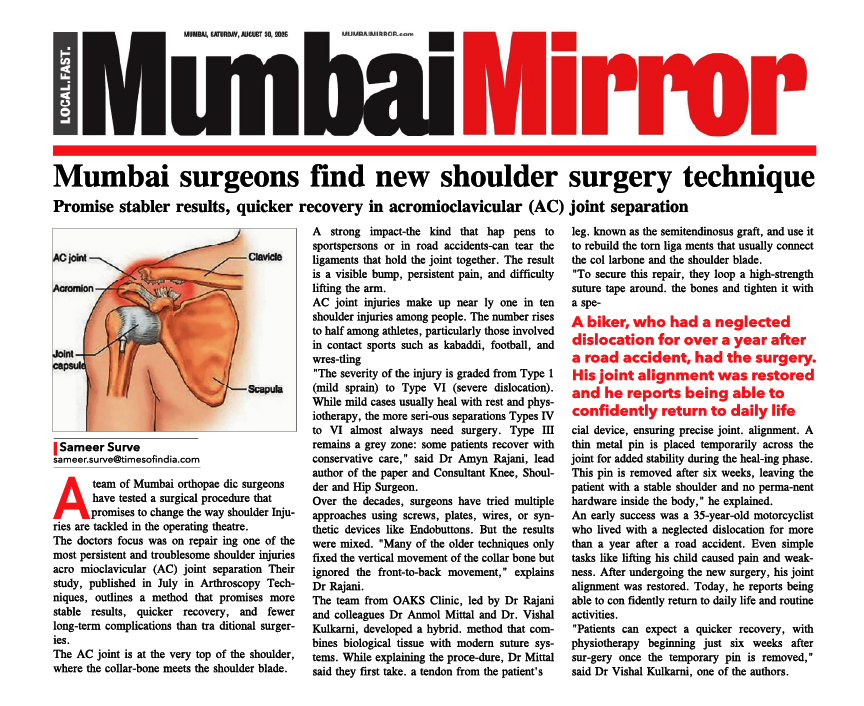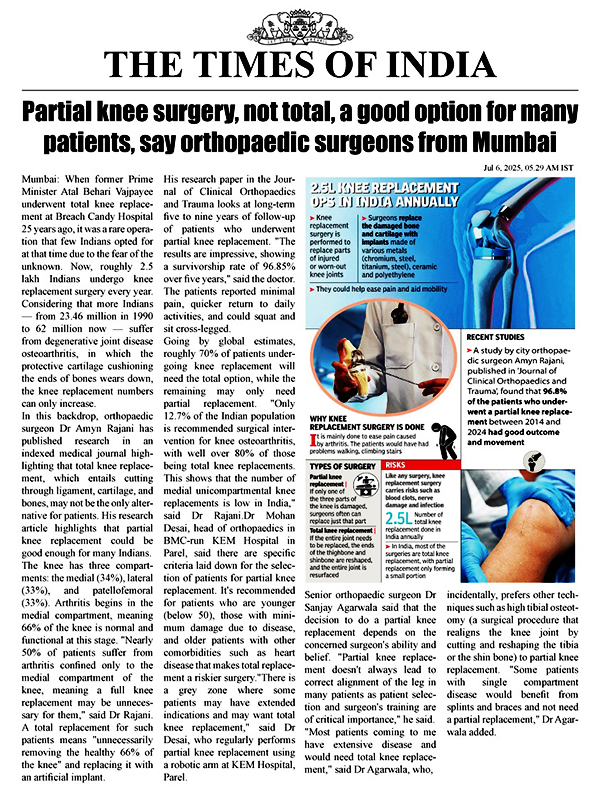What is a Reverse Total Shoulder Replacement?
Reverse total shoulder replacement is a specialized surgical procedure designed to improve shoulder function and reduce pain in individuals with severe shoulder damage. Unlike a standard shoulder replacement, where the ball and socket components mimic the natural anatomy, the reverse shoulder replacement switches the positions of these components.
The ball is attached to the shoulder blade, and the socket is fixed to the upper arm bone (humerus). This configuration relies on the deltoid muscle rather than the rotator cuff to move the arm, making it ideal for patients with a damaged or non-functioning rotator cuff.

What is the Difference Between a Reverse and Standard Shoulder Replacement?
The key difference between a reverse and standard shoulder replacement lies in the placement of the ball and socket. In a standard shoulder replacement, the ball (humeral head) is replaced with a metal ball, and the socket (glenoid) is replaced with a plastic cup. This configuration requires a functioning rotator cuff to stabilize and move the shoulder.
In contrast, a reverse shoulder replacement reverses this relationship, placing the ball on the shoulder blade and the socket on the arm bone. This change allows the deltoid muscle to power the shoulder, which is particularly beneficial for patients with torn or non-repairable rotator cuffs.
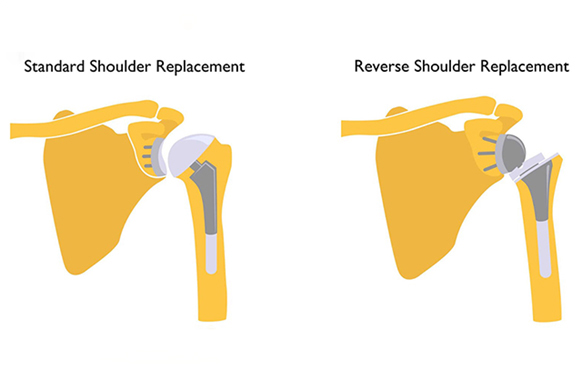
Who May Need a Reverse Total Shoulder Replacement?
Reverse total shoulder replacement is typically recommended for individuals with:
- Severe rotator cuff tears: When the rotator cuff is irreparably damaged, standard shoulder replacement may not be effective.
- Cuff tear arthropathy: A condition where chronic rotator cuff tears lead to arthritis in the shoulder.
- Previous shoulder replacement failure: When a standard shoulder replacement has failed or dislocated.
- Severe shoulder arthritis: Especially when accompanied by rotator cuff damage.
- Fractures: Complex shoulder fractures that are difficult to repair using other methods.
What Shoulder Conditions Warrant Reverse Total Shoulder Replacement?
The following conditions may warrant a reverse total shoulder replacement:
- Massive rotator cuff tears: When the tear is too large to be repaired.
- Shoulder instability due to rotator cuff deficiency: Leading to pain and loss of function.
- Post-traumatic arthritis: Following a severe shoulder injury.
- Failed previous shoulder surgeries: Including failed rotator cuff repairs or standard shoulder replacements.
- Chronic shoulder dislocations: That cannot be stabilized by conventional means.
Who Should Not Have a Reverse Total Shoulder Replacement?
Reverse total shoulder replacement may not be suitable for:
- Patients with severe deltoid muscle weakness or damage: As the procedure relies on the deltoid muscle to function.
- Active infections in the shoulder area: Surgery may exacerbate the infection.
- Severe medical conditions: That increase surgical risks, such as uncontrolled diabetes or heart disease.
- Poor bone quality: Which may not support the prosthesis.
Risks and Complications of Reverse Total Shoulder Replacement
Like any major surgery, reverse total shoulder replacement carries potential risks, including:
- Infection: Though rare, infections can occur at the surgical site.
- Nerve damage: Injury to the nerves around the shoulder may result in weakness or numbness.
- Dislocation: Although less common than in standard shoulder replacements, dislocation can still occur.
- Fractures: The bones surrounding the implant may fracture.
- Implant loosening or wear: Over time, the prosthetic components may loosen or wear out, requiring revision surgery.
Preparing for Reverse Total Shoulder Replacement
Preparation for reverse total shoulder replacement involves:
- Medical evaluation: A thorough assessment by your surgeon, including imaging studies and blood tests.
- Physical therapy: Preoperative exercises may be recommended to strengthen the deltoid muscle.
- Medication management: Stopping certain medications that may increase surgical risks.
- Lifestyle adjustments: Smoking cessation and weight management may be advised to improve surgical outcomes.
What Happens During Reverse Total Shoulder Replacement?
During the procedure:
- Anesthesia: General anesthesia is administered to ensure the patient is asleep and pain-free.
- Incision: A surgical incision is made on the front of the shoulder.
- Implant placement: The damaged bone and cartilage are removed, and the new prosthetic components are placed, with the ball attached to the shoulder blade and the socket to the humerus.
- Closure: The incision is closed with sutures or staples, and a dressing is applied.
- Recovery room: The patient is monitored in a recovery room before being transferred to a hospital room.

What Happens After a Reverse Total Shoulder Replacement?
Postoperative care includes:
- Pain management: Medications are provided to manage pain.
- Wound care: Instructions on keeping the surgical site clean and dry.
- Physical therapy: A rehabilitation program begins soon after surgery to restore range of motion and strengthen the shoulder.
- Follow-up visits: Regular check-ups with your surgeon to monitor healing and progress.
Recovery After Reverse Total Shoulder Replacement
Recovery typically involves:
- Hospital stay: Most patients stay in the hospital for 1-3 days after surgery.
- Rehabilitation: Physical therapy is crucial, starting with gentle movements and gradually increasing in intensity.
- Activity restrictions: Avoiding heavy lifting or strenuous activities for several months.
- Full recovery: It may take up to 6 months to a year for full recovery, with most patients regaining significant function and pain relief.
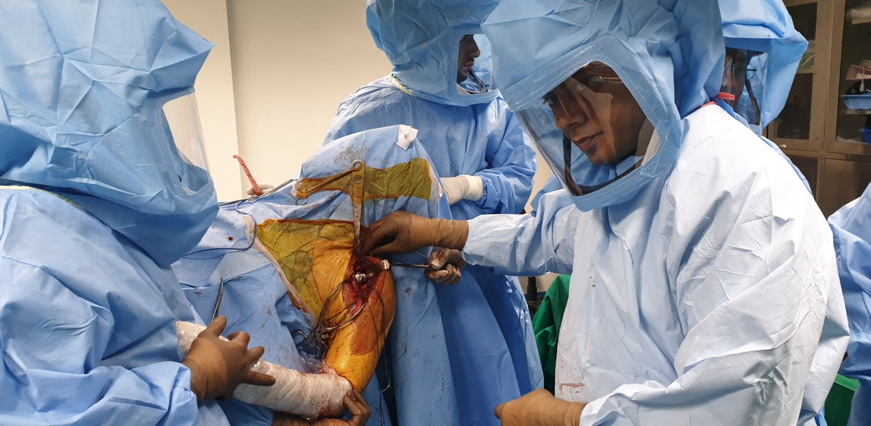
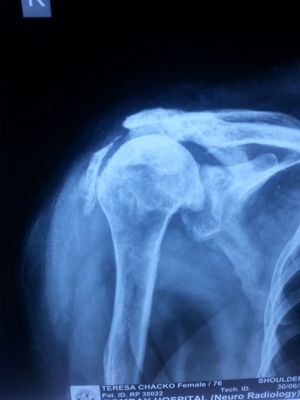
Pre Surgery X-ray for Rotator Cuff Arthopathy

Post Surgery X-ray for Rotator Cuff Arthopathy

Pre Reverse Shoulder Replacement
Suregry X-ray for complex Fracture
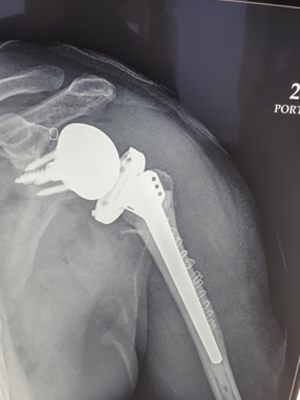
Post Reverse Shoulder
Replacement Suregry X-ray
for complex Fracture
Lifespan of the Reverse Prosthesis
The reverse shoulder prosthesis is designed to be durable, but its lifespan can vary. On average, the prosthesis may last 10-15 years, depending on factors such as activity level, overall health, and adherence to rehabilitation. Some patients may require revision surgery if the prosthesis loosens or wears out over time.
FAQs
How long does the reverse shoulder replacement surgery take?
The surgery typically takes about 2-3 hours, depending on the complexity of the case.
Will I have full shoulder movement after reverse shoulder replacement?
While many patients experience significant improvement in shoulder function, some loss of range of motion, particularly in reaching overhead, may occur.
Can reverse shoulder replacement fail?
Although rare, complications like implant loosening or infection can lead to failure, requiring revision surgery.
How soon can I drive after reverse shoulder replacement?
Driving is usually allowed once you have regained sufficient strength and mobility, typically 6-8 weeks after surgery.
Is reverse shoulder replacement covered by insurance?
Most insurance plans cover the procedure if deemed medically necessary. It's advisable to check with your insurance provider for specific coverage details.

